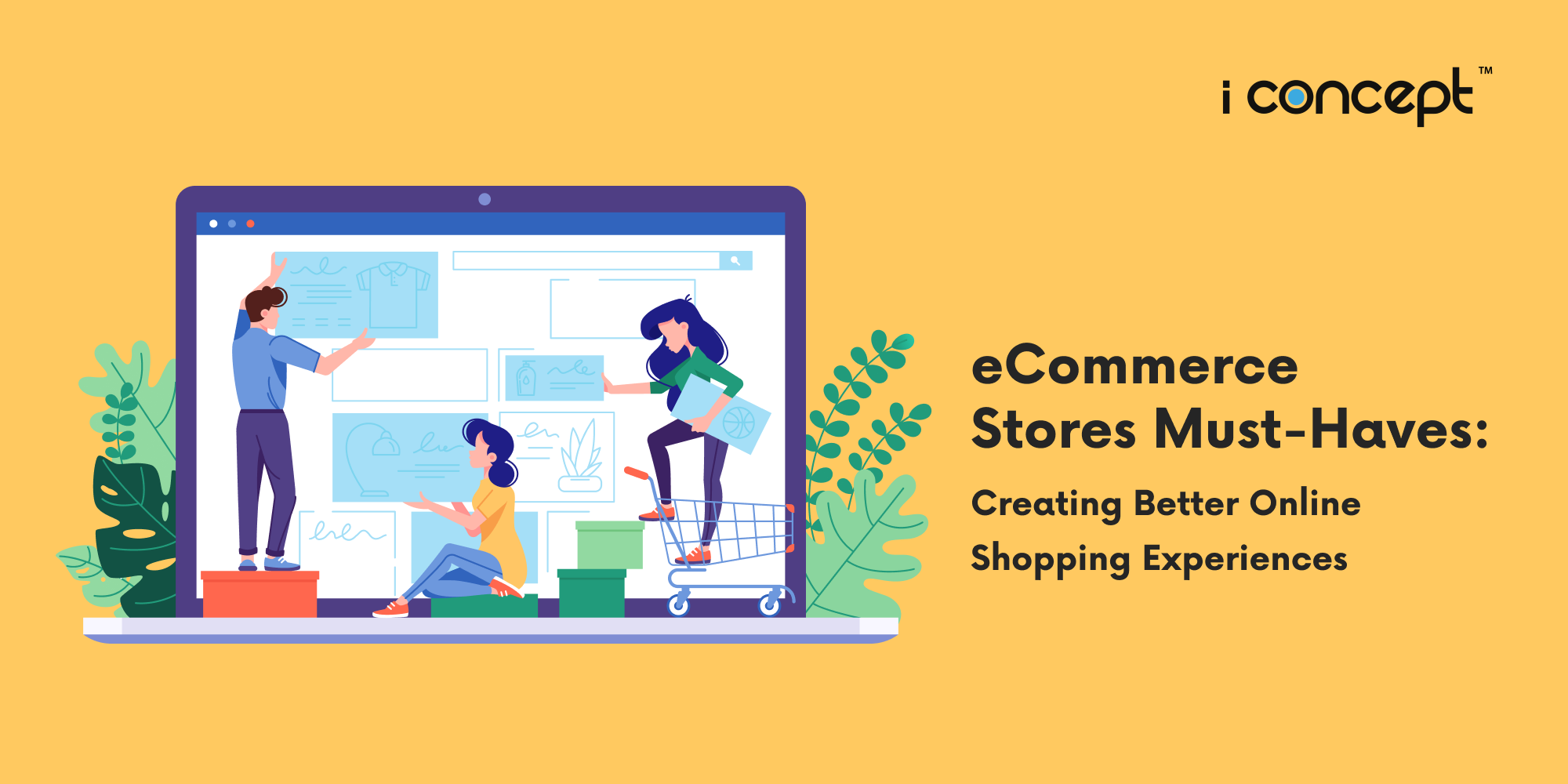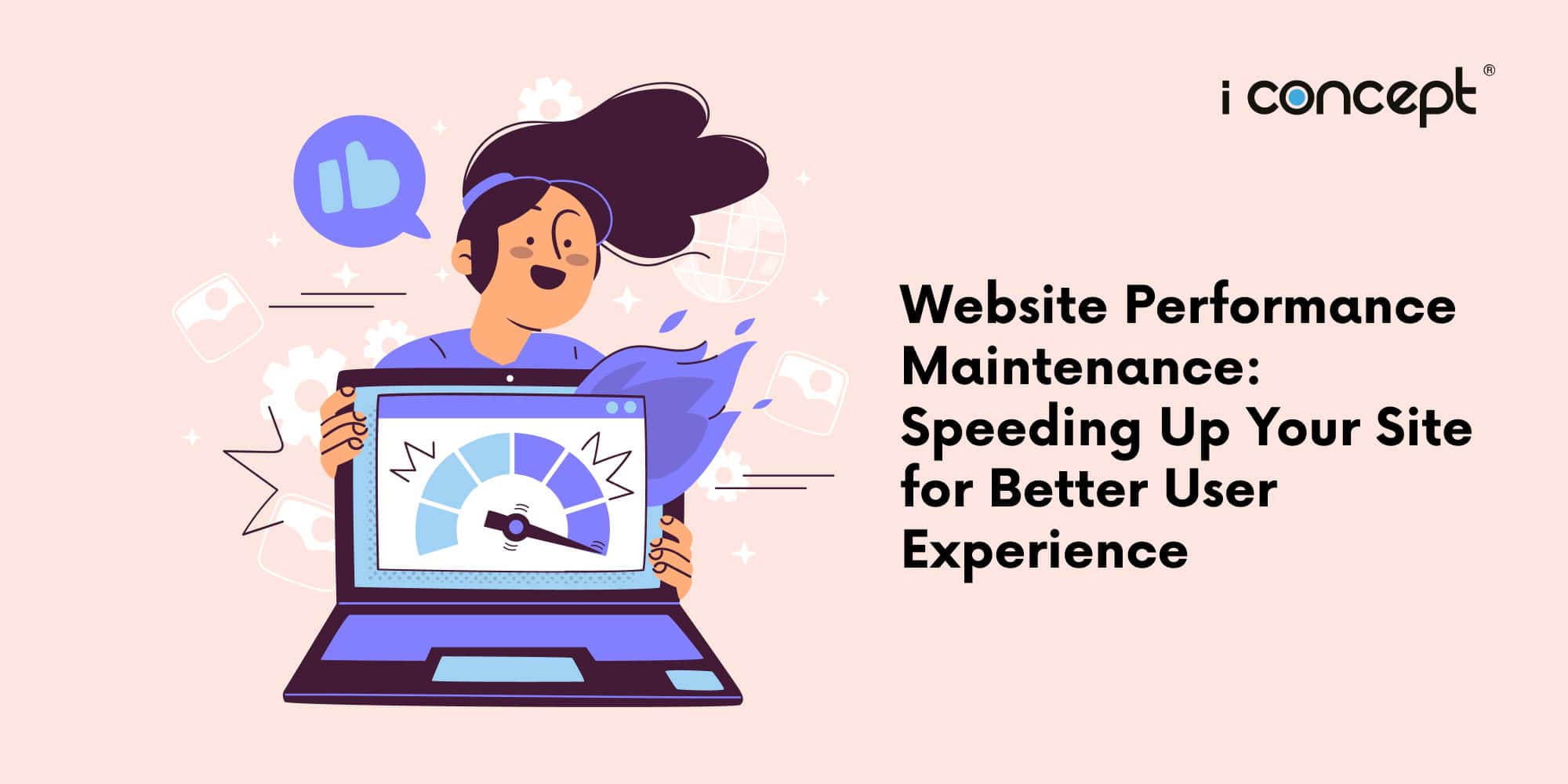When it comes to eCommerce websites, it’s all about functionality, design, and the features of eCommerce platforms. More than just a digital marketing tool for your business, your webstore should be representative of your business, as it carries (almost) everything your customer needs, from the store and the items to payment options and customer support.
Creating and designing a webstore is like carving out the customer experience journey for your potential customers. You want them to feel prioritised when shopping at your store, and also safe to transact with your business online.
We’ve witnessed trends in eCommerce website design, like animation, 360-degree product previews, advanced filtering by product types and categories, and dynamic product search. However, trends don’t guarantee conversion rates or robust user experiences. There are certain elements that every eCommerce site should have, to stay relevant and competitive.
In this post, we’ve narrowed it down to ten essential eCommerce platform features that you must have on your webstore, for you.
1. User-Friendly
Keeping simple and user-friendly is always key! Simplicity should be a goal in good design and you don’t have to sacrifice elegance to achieve it.
The objective is to help shoppers get to what they want faster, and without running into unnecessary complexity that can clog up the path to purchase. Online sellers have minutes, if not seconds, to make a sale. Focus on the user experience by providing shopping categories, filters, and comparison capabilities.
To make your eCommerce site more user-friendly, consider the following:
- Improve search functionality, preferably with an autocomplete option.
- Create effective, visual navigation.
- Have sticky menus (a fixed menu bar that’s constantly visible as users scroll) and relevant shortcut buttons.
- Pre-populate forms to reduce manual entering.
A good eCommerce site helps to give your business a competitive advantage, and should not be a cumbersome experience for your visitors.
2. Mobile-Friendly Website
Mobile shopping accounts for over 70% of online transactions today. This is up from 50% just 3 years ago.
With a mobile responsive website, content intuitively adapts to whatever device is accessing it to provide the most user-friendly experience.
It does not matter if you have hundreds of product pages, or just five or ten. Creating a mobile-friendly experience for your shoppers will improve sales, and potentially your search engine rankings.
3. High-Resolution Photos & Videos
Gone are the days where posting one photo with a few bullet points and a basic price tag makes for a good listing. Shoppers want to see multiple angles and people using the product in different environments. They want to be able to zoom in and get a closer feel of the product.
Technical considerations for images are crucial. Images that don’t load, or take too long to load, will see a higher consumer drop-off rate.
And we’re not just talking about professionally shot photos. It is found that adding Instagram photos to product pages can help increase checkout rates.
As you can see, images sell better than just text.
eCommerce websites should display multiple photos per product. The photos need to be of high resolution and optimised for page load.
4. User-Generated Reviews
And that brings us to the next point, relatability (and to some extent, authenticity).
Shoppers read reviews. About 93% of them do, in fact.
While you might think that having negative reviews is a sale killer, the opposite is true instead. Having negative reviews can be a positive thing. It’s shown that products without negative reviews are seen as censored, and shoppers will in turn assume that all the positive reviews are fake.
Depending on website functionality, eCommerce sites can choose to use plugins from the most popular review platforms (e.g. Yelp, Foursquare, Facebook, Google, etc).
You may also choose to adopt user-generated content (and reviews) to drive social proof and build a raving fan base.
5. Wish Lists
Don’t put ‘Wish Lists’ on your wish list of essential features. Make it a must-have. eCommerce sites that aren’t using wish lists are leaving revenue on the virtual desktop table.
What’s better than having customers bookmark items they want and will most likely buy in the future? That’s simply gold in the pocket. And a remarketing campaign dream. Notice the ads you keep seeing on your social media feed from Amazon or Lazada, of that item you dropped into your wish list?
6. Related Items
Simply seeing the phrase, “you might like this” causes a serotonin release signalling curiosity and excitement.
A ‘related items’ feature on an eCommerce site creates the desirable stickiness effect that so many marketers strive to achieve.
It happens like this: You saved a coffee maker to your shopping cart. Then a “you might like this” section appears. A selection of freshly-roasted, fair trade whole coffee beans. A compact and easy-to-use digital scale to measure coffee grounds. A chic coffee mug. All these are presented to you. Tempting, isn’t it?
When an online seller uses the related items feature to sell more, it’s actually signalling to the buyer that “they get me”. Related items can also include similar product categories, or “people who bought this item also searched for”, and so on. You get the drift.
7. Security Features
Online transactions are an integral part of our lives today. With the rise (and complication) of online scams these days, people are paying more attention to how safe their digital transactions are.
Even then, eCommerce websites continue to be a lucrative target for cybercriminals. Thus, it is crucial that online sellers do what they can to protect customer information and take steps to ensure privacy.
It all starts with a secure eCommerce platform.
Here are some must-have eCommerce security features to consider:
- SSL certificate: Establishes secure connectivity between a user and the website. Look for HTTPS and a green lock in the address bar before trusting an online store with your information. Select an SSL certificate vendor with name recognition.
- Two-factor authentication: Adds an extra layer of security by requiring a username/password and a system-generated code sent via email or mobile text.
- Use a firewall: Provides a gateway or wall between two networks and permits authorised traffic and blocks malicious traffic.
- Privacy policy link in footer: Addresses the website’s privacy policies and promises customer data is not shared with third parties.
8. Advanced Payment Options
In the world of Apple Pay and PayPal, advanced payment options are a must-have feature for an eCommerce site. Just consider the ease of use associated with Amazon one-click shopping. Shoppers with registered accounts can literally buy with the click of a button.
There are many popular online payment options. The key is understanding who the buyer is and implementing the most effective solutions. If your website is limiting payment options, make sure to explain why.
For example, an eCommerce site may not offer Bitcoin as a payment option after determining its value isn’t reliable.
If buyers are technology-savvy individuals who tend toward this payment method, it’s important to be transparent as to why it isn’t an option. This transparency establishes that the brand understands its buyers and builds trust.
9. Detailed Shipping Information
Alarmingly, unexpected shipping costs are the number one reason for shopping cart abandonment. Therefore, it is critical that eCommerce websites include shipping information early in the checkout process, including a ZIP code/region calculator showing cost.
It’s also helpful to include delivery time and options for faster delivery. Sites should list countries that are outside normal shipping zones.
Interestingly, shoppers spend more per order when free shipping is included. And some two-thirds of online shoppers think free shipping should always be the case. Be sure to present codes for free shipping on all pages of the site through the header navigation, if applicable.
10. Return Policy
Return policies are an essential feature of any eCommerce website. Your return policy should be clearly visible and well-written or illustrated.
This is another trust-building feature of online selling. It reassures buyers that if they are unhappy or just need a different size, the brand is there for them.
Start Creating Fantastic Online Shopping Experiences
You can have fancy eCommerce websites with a million and one features, but you need to get the basics right. These ten essential features will help make your site a fabulous one for your customer, who will be happy and safe when clicking and shopping around.
Tempted to get started on creating your business’ very own eCommerce platform? You may want the help of the people in the know to make it great. At I Concept, your preferred creative agency in Singapore, we have got a team of creative strategists, designers, and programmers who will be able to lend you a hand in creating your dream eCommerce website.
What’s more, you get to tap on the Productivity Support Grant (supported by Enterprise Singapore) and enjoy up to 80% subsidy in developing your webstore! The grant encourages SMEs to turn to digital solutions to increase productivity.
When it comes to eCommerce development, trust us to put in the essentials, and jazz it up to your liking. Get in contact with us and let’s start talking about your brand’s very own webstore-in-the-making.










